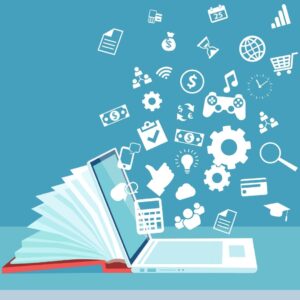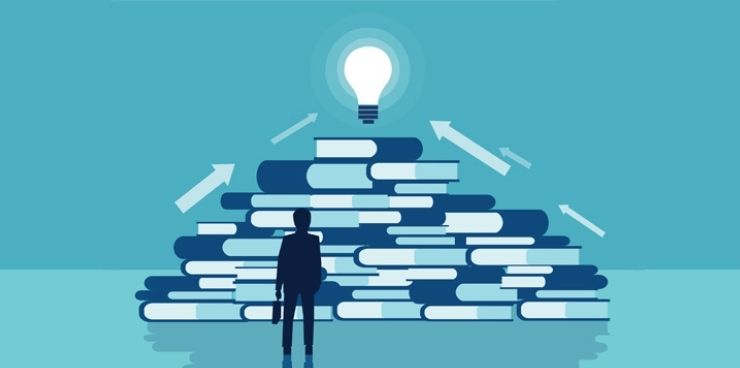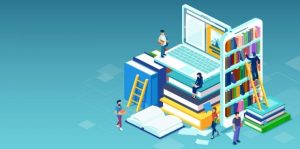If you have recently launched a new business or product, the temptation to hire a full sales team and throw yourself wholeheartedly into the market is probably overwhelming. Don’t do it. Instead, lean into the sales learning curve. When we say sales learning, we mean taking the opportunity to learn how your product or service fits into the existing market.
Even the best models are just that: models. They cannot predict everything, which is why sales learning is so necessary. Take a moment to find your feet before you overcommit your time, money and resources with no guarantee of success.
Sales Learning
You have heard of learning curves before, usually in reference to a position or activity that has a steep learning curve, meaning you have to learn fast or fail. Selling a product is one of those activities, which is where the sales learning curve comes in. You only have one chance to make a first impression on potential customers.
You also only have so many resources to devote to selling if you are not making any money back. Marketing is expensive, and the best salespeople can command excellent salaries. If you do not do your research and learn what strategies work for you, your product, and maybe even your company are going to be short-lived. Focusing on eLearning and development is a great way to use technology to your advantage while you move along the sales learning curve.
Surely the Best Way to Learn Is by Doing
In a way, you would be right if you said the best way to learn is by doing. Projections and focus groups can only tell you so much, although eLearning and development are different. Regardless, at a certain point, you have to just go for it and launch your business or product. As nerve-wracking as that might be, it is the only way to know where your product fits into the market and how your customers interact with it.
However, you have to balance sales learning with scale. Some amount of risk is inherent in a new business venture, but that makes it more crucial that you manage risk where you can, not less. It is far more sustainable to fail on a small scale several times than it is on a large scale even once.
Learning When You Have a New Product
You have a bit of an advantage when launching a new product at an existing company rather than creating a start-up specifically
While those factors are helpful and increase your odds of success, they will not be enough to make up for poor planning or a refusal to adapt as you try to move along the sales learning curve. If you are assigning a new product to an existing sales team, they may be reluctant to put in the extra effort needed without additional compensation. They may also be unwilling to stake their reputation as a salesperson on a product they view as unreliable or underdeveloped.
If you are hiring a new sales team to focus specifically on your new product, you may find yourself spending more money than you are making, at least initially, and if that trend continues, you could face difficulties.
To successfully launch a new product at an existing company, you need buy-in from your sales team and have an understanding of the product’s place in the market to begin turning a profit quickly. That is what sales learning is all about.
Learning When You Have a New Company

It all comes down to sales learning—and a bit of luck. There is always a chance that an unforeseen personal or economic disaster will send you spiraling off course, but there is no use in worrying about factors outside of your control. You can carefully monitor and adjust your sales model to ensure your odds of success are the best they can be.
When launching a start-up and a new product, do not overcommit your resources and be open to making changes if required. The sales learning curve has been a topic of discussion because it is vital to the success of start-ups everywhere.
Sales Learning and Development
There are three main phases generally identified in sales learning and development: the initiation phase, the transition phase and the execution phase. To begin, you need a product that is ready to go to market, although if something is not working or further development is needed, do not hesitate to make changes.
Initiation
In the initiation phase, you will not be breaking even and you should have a small sales team. Have your team focus on how your potential customers interact with the product and what they want out of it. Initiation is where most of the learning occurs in sales learning and development.
Transition
The transition phase occurs when you begin to break even. During this phase, your focus should be on ensuring that your sales model will continue to be relevant as time passes. You want to be able to repeat your results, which is where the development aspect of sales learning and development comes into play.
Execution
The execution phase starts when you are confident in the product’s ability to succeed. Now, you can finally hire that big sales team you have been dreaming of since you first started thinking about your product. At this point, you have a profitable, lasting sales model in place. Sales learning is never truly over, but your company should be stable and comfortable in its knowledge at this point.
eLearning Sales
Technology has made sales learning much easier to organize and track. With eLearning sales resources, you can take advantage of educational opportunities across the country without incurring travel expenses or risking the health and safety of your employees with the ongoing COVID-19 pandemic.
In general, when you read about sales learning, the writer is referring to the learning process of the company as a whole. eLearning sales resources can work for an entire company, but they can also be useful for individuals.
Customer relationship management (CRM) software could be considered an eLearning sales resource that’s relevant company-wide. That is why we make the distinction between projections and eLearning. CRM software keeps up with your company no matter where you are on the sales learning curve.
eLearning sales education for individuals can take many forms, from online workshops to virtual professional development opportunities. They are an efficient way for your sales team to learn new methods that fit whichever phase of development your sales model is in.
Learning Sales and Marketing
We have discussed the necessity of making sure your sales team and marketing department are in alignment before. You will see better, more efficient results if they are. That is especially true when you are in the delicate stages of launching a new product or company. Your marketing efforts are what connect potential customers with your sales team. Therefore, the importance of learning sales and marketing cannot be underestimated.
Knowing when and how to launch a marketing campaign is essential. But doing so has an even steeper curve than sales learning. If your marketing campaign is launched before your product has been finalized, you may find that potential customers develop expectations that your product will not meet. You may also find yourself burning through money that you cannot easily replace. Focusing on learning sales and marketing in concert helps you avoid costly mistakes.
How Do You Know You’re Learning?
You are going to make sales learning a priority. However, doing so will not do you much good if you cannot measure your progress. The best way to tell if your sales learning process is a success is to measure your sales yield. Your sales yield is the average revenue produced per sales representative over a period of time.
When you chart your sales yield over time, you can tell the rate at which you are improving. The more you learn, the more efficient you are. The more efficient you are, the higher your sales yield will be. Tracking your sales yield is not just useful for sales learning. It has the added benefit of giving you numbers to show to stakeholders and potential investors.
Conclusion – Sales Learning
The best way to avoid costly mistakes relating to sales learning or anything else is to consult an expert. Someone who has been in the industry for a long time has likely seen every problem you are experiencing before. And they probably have solutions too. Selling Revolution’s Ryan Chute has years of experience across multiple industries, allowing him to see what others might miss. If you are looking for professional expertise that will help you lean into the sales learning curve and succeed, book an obligation-free video call today. Openings fill up quickly, so do not wait.


